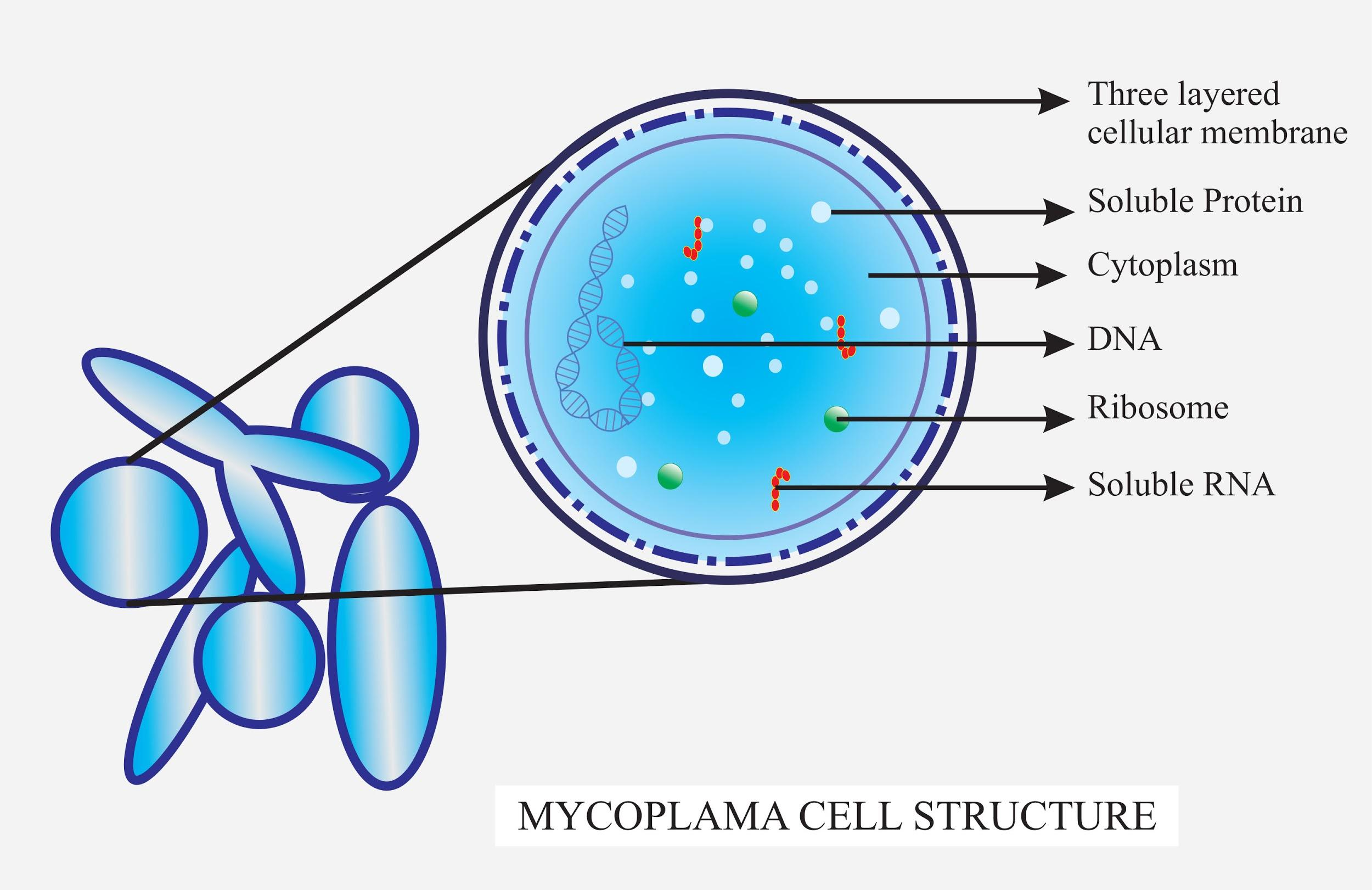
Describe Mycoplasma and write its features.
Answer
557.1k+ views
Hint: Mycoplasmas are known to be the smallest living organisms on earth that completely lack a cell wall. These organisms can survive even in absence of oxygen. Many of these mycoplasmas are pathogenic to animals and plants.
Complete Solution:
Mycoplasma is a genus of bacteria that lack the cell wall around the cell membranes. They are the simplest self-replicating bacteria. The basic form of Mycoplasma is coccus. They are also known as mollicutes.
The cell contains a minimum number of organelles like plasma membrane, a genome which consists of a double-stranded circular DNA molecule which is naked and ribosomes which are of 70S type.
Mycoplasmas reproduce by binary fission but cytoplasmic division occurring frequently may lag behind genome replication which results in the formation of multinucleate filaments.
As they lack cell walls, they are naturally resistant to antibiotics that target cell wall synthesis. It lacks a nucleus and other membrane-bound organelles. These organisms are pleomorphic i.e., they can change their shape.
Additional information:
Mycoplasmas have triple-layered cell membranes. They show similarity with prokaryotes in the majority of their general characteristics.
Mycoplasmas are parasites or commensals of humans, animals, and plants. They have been found in pleural cavities of cattle that were suffering from pleuropneumonia.
These organisms are also referred to as PPLO(pleuropneumonia-like organisms)or MLO(mycoplasma-like organisms).
As mycoplasmas lack a cell wall, they are resistant to beta-lactam antibiotics(e.g., Penicillin).

Note:
Mycoplasma is the smallest living cell without a cell wall. The smallest living cell with a cell wall is bacteria. Members of Archaebacteria and Eubacteria belong to this category.
Complete Solution:
Mycoplasma is a genus of bacteria that lack the cell wall around the cell membranes. They are the simplest self-replicating bacteria. The basic form of Mycoplasma is coccus. They are also known as mollicutes.
The cell contains a minimum number of organelles like plasma membrane, a genome which consists of a double-stranded circular DNA molecule which is naked and ribosomes which are of 70S type.
Mycoplasmas reproduce by binary fission but cytoplasmic division occurring frequently may lag behind genome replication which results in the formation of multinucleate filaments.
As they lack cell walls, they are naturally resistant to antibiotics that target cell wall synthesis. It lacks a nucleus and other membrane-bound organelles. These organisms are pleomorphic i.e., they can change their shape.
Additional information:
Mycoplasmas have triple-layered cell membranes. They show similarity with prokaryotes in the majority of their general characteristics.
Mycoplasmas are parasites or commensals of humans, animals, and plants. They have been found in pleural cavities of cattle that were suffering from pleuropneumonia.
These organisms are also referred to as PPLO(pleuropneumonia-like organisms)or MLO(mycoplasma-like organisms).
As mycoplasmas lack a cell wall, they are resistant to beta-lactam antibiotics(e.g., Penicillin).

Note:
Mycoplasma is the smallest living cell without a cell wall. The smallest living cell with a cell wall is bacteria. Members of Archaebacteria and Eubacteria belong to this category.
Recently Updated Pages
Master Class 11 Economics: Engaging Questions & Answers for Success

Master Class 11 English: Engaging Questions & Answers for Success

Master Class 11 Social Science: Engaging Questions & Answers for Success

Master Class 11 Biology: Engaging Questions & Answers for Success

Class 11 Question and Answer - Your Ultimate Solutions Guide

Master Class 11 Business Studies: Engaging Questions & Answers for Success

Trending doubts
10 examples of friction in our daily life

One Metric ton is equal to kg A 10000 B 1000 C 100 class 11 physics CBSE

Difference Between Prokaryotic Cells and Eukaryotic Cells

1 Quintal is equal to a 110 kg b 10 kg c 100kg d 1000 class 11 physics CBSE

State the laws of reflection of light

Explain zero factorial class 11 maths CBSE




